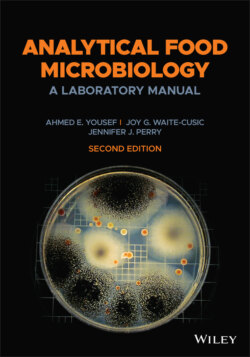Читать книгу Analytical Food Microbiology - Ahmed E. Yousef - Страница 69
MOST PROBABLE NUMBER METHOD Principles
ОглавлениеThe most probable number () technique is useful for enumerating low levels of microorganisms (<103 CFU/g) in water, milk, and foods whose structure interferes with accurate plate count methods. These small populations, generally, cannot be enumerated reliably with other techniques. The essence of the MPN technique is that the dilution of the sample into replicate tubes causes the viable population to decrease to a point where it becomes detectable in some of the diluted tubes (positive tubes) but not in the others (negative tubes). When positive and negative tubes in each dilution are counted, results can be used to estimate the population in the original sample. An estimate of population density in the original sample is based on probability formulas that take into account the following: number of dilutions included, the number of replicate tubes receiving each dilution, the number of positive tubes in each dilution, and the amount of original sample present in each dilution. Although equations are available for calculating MPN, tables that simplify the calculations are used (Table 3.2).
To enumerate microbial population in a solid food using the MPN technique, the sample is homogenized and decimally diluted in an appropriate diluent as previously discussed. The number of dilutions prepared are often limited, with 2–4 dilutions typically prepared. Measured portions (e.g., 1 ml) of the food homogenate and its subsequent dilutions are transferred into replicate tubes (commonly 3) of a selective, differential, or selective‐differential broth medium depending on the target population. A larger number of replicate tubes (e.g.,5 tubes) may be used for increasing the proportion of the analytical sample subjected to analysis, thus improving the detection limit of the technique. The tubes are incubated at the appropriate temperature for the appropriate time, and the tubes are inspected for turbidity or for reactions specific to the microorganisms of interest. The results are used in calculating the MPN of the microorganism in g of food, as described later. An example of an MPN dilution and inoculation scheme is shown in Figure 3.6. To enumerate microbial population in a liquid food, the sample may be decimally diluted directly, an appropriate set of MPN tubes are prepared, and MPN/ml is calculated.
